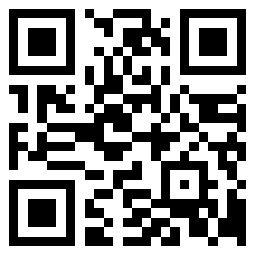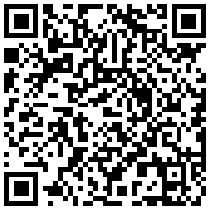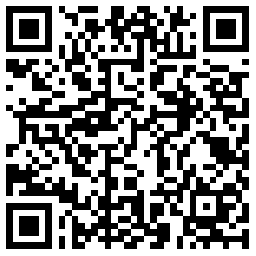-
摘要:
目的 构建心脏骤停患者院内死亡的预测模型。 方法 本研究为回顾性分析,纳入美国重症监护医学信息数据库Ⅳ(medical information mart for intensive care-Ⅳ,MIMIC-Ⅳ)2.0中出院诊断包含心脏骤停且具有ICU入住经历的18岁以上成年患者。研究采用逐步回归筛选变量,选取逐步回归分析结果中P<0.05的变量并纳入多因素Logistic回归,以构建心脏骤停患者院内死亡的预测模型。绘制受试者操作特征(receiver operator characteristic,ROC)曲线及校准曲线,分别对预测模型的区分度和一致性进行评价,并创建评估心脏骤停患者死亡风险的动态诺模图计算器。 结果 共纳入1772例符合入选标准的患者,平均年龄为(64.93±16.52)岁,其中963例(54.3%, 963/1772)患者发生院内死亡。多因素Logistic回归构建心脏骤停患者院内死亡风险预测模型的指标包括:心脏骤停病因诊断、经年龄调整后的查尔森合并症指数(Chalson comorbidity index,CCI)评分、体质量指数、ICU入住24 h内的生命体征、ICU入住24 h内的乳酸水平最低值、ICU入住24 h内的格拉斯哥昏迷评分最低值、超声心动图检查、有创机械通气和血管升压素的使用。该模型的灵敏度和特异度分别为73.1%(95% CI:0.702~0.759)和71.6%(95% CI:0.683~0.745),ROC曲线下面积为0.806(95% CI:0.786~0.826)。 结论 基于本研究建立的预测模型可能有助于预测心脏骤停患者的院内死亡。 Abstract:Objective To build a prediction model of the in-hospital death of patients with cardiac arrest. Methods This study is a retrospective analysis based on the medical information mart for intensive care-Ⅳ (MIMIC-Ⅳ)2.0. We gathered the information of patients above 18 years old, with cardiac arrest and intensive care unit (ICU) experience. A stepwise multi-variate logistic regression analysis was performed to filter variables, variables with P values < 0.05 were kept and enter as predictors of in-hospital death of patients with cardiac arrest. The model was evaluated with receiver operating characteristic (ROC) curve for discriminative power and with calibration curve for consistency. Finally, an online dynamic nomogram calculator was built to calculate the risk of in-hospital death. Results This study included 1772 patients with cardiac arrest. The mean age of those patients was (64.93±16.52) years old, and 963 (54.3%) patients suffered in-hospital death. The factors of the prediction model for in-hospital death of cardiac arrest patients constructed based on multi-variate logistic regression included: potential cardiac disease diagnosis, age adjusted Chalson comorbidity index(CCI), body mass index (BMI), vital signs, lowest lactic acid and lowest Glasgow coma scale (GCS) during the first 24 hours after entering ICU, cardiac ultrasound examination, invasive mechanical ventilation and vasopressin utilization. The sensitivity and specificity of the prediction model were 73.1%(95% CI: 0.702-0.759) and 71.6%(95% CI: 0.683-0.745), respectively. Area under the ROC curve was 0.806(95% CI: 0.786-0.826). Conclusions The prediction model built in this study can properly predict the in-hospital death of patients with cardiac arrest. -
Key words:
- cardiac arrest /
- intensive care unit /
- in-hospital death /
- prediction model
作者贡献:张楠负责数据提取、统计分析及论文撰写;林清婷负责统计分析;朱华栋负责论文选题及审校。利益冲突:所有作者均声明不存在利益冲突 -
图 4 心脏骤停患者死亡风险预测动态诺莫图示例
Charlson_ comorbidity_ index:查尔森合并症指数;BMI:同表 1;heart_ rate_ min:24 h心率最低值;heart_ rate_ max:24 h心率最高值;SBP_ max:24 h收缩压最高值;DBP_ min:24 h舒张压最低值;temperature_ min:24 h体温最低值;temperature_ max:24 h体温最高值;SpO2_min:24 h脉搏氧饱和度最低值;lactate_ min:24 h乳酸水平最低值;GCS_ min:格拉斯哥昏迷评分最低值:Echo:是否进行心脏超声检查;Va:是否使用血管升压素;ventilation_ s:是否使用有创机械通气
表 1 院内死亡组与院内存活组患者的一般临床资料
指标 院内死亡组(n=963) 院内存活组(n=809) P值 人口学特征 年龄(x±s,岁) 66.31±16.57 3.29±16.33 <0.001 女性[n(%)] 410(42.6) 295(36.5) 0.009 BMI(x±s,kg/m2) 28.13±7.39 29.13±7.93 0.006 急诊入院[n(%)] 537(55.8) 418(51.7) 0.085 潜在心脏病因引起心脏骤停[n(%)] 43(4.5) 108(13.3) <0.001 生命体征(x±s) SBP(min,mm Hg) 77.77±23.78 87.11±18.73 <0.001 SBP(max,mm Hg) 148.76±31.91 152.80±25.83 0.004 DBP(min,mm Hg) 40.14±14.52 45.56±12.69 <0.001 DBP(max,mm Hg) 89.23±24.44 89.77±19.16 0.610 HR(min,次/min) 69.56±21.41 65.14±16.13 <0.001 HR(max,次/min) 111.13±25.68 103.26±24.35 <0.001 RR(min,次/min) 13.66±5.31 12.55±4.28 <0.001 RR(max,次/min) 30.32±8.42 27.95±6.44 <0.001 T(min,℃) 35.41±1.59 36.12±1.12 <0.001 T(max,℃) 36.67±1.60 37.32±1.00 <0.001 SpO2(min,%) 85.80±13.84 91.69±6.63 <0.001 SpO2(max,%) 98.67±4.30 99.73±0.83 <0.001 实验室检查(x±s,mmol/L) Lac(min) 3.63±3.10 1.93±1.35 <0.001 Lac(max) 6.11±4.71 3.85±2.95 <0.001 GCS[min,M(P25,P75)] 14(5,15) 14(9,15) 0.758 SOFA评分[M(P25,P75)] 10(6,13) 7(4,11) <0.001 呼吸系统 2(0,4) 2(0,4) <0.001 血液系统 0(0,1) 0(0,1) <0.001 肝脏系统 0(0,1) 0(0,0) <0.001 循环系统 4(1,4) 1(1,4) <0.001 中枢系统 1(0,4) 1(0,3) 0.600 肾脏系统 2(1,3) 1(0,2) <0.001 经年龄调整后的CCI评分[M(P25,P75)] 6(4,9) 6(4,8) <0.001 年龄评分[M(P25,P75)] 4(2,4) 3(2,4) <0.001 心肌梗死[n(%)] 262(27.2) 255(31.5) 0.047 充血性心衰[n(%)] 355(36.9) 365(45.1) <0.001 周围血管性疾病[n(%)] 152(15.8) 107(13.2) 0.129 脑血管疾病[n(%)] 176(18.3) 105(13.0) 0.002 痴呆[n(%)] 35(3.6) 24(3.0) 0.435 慢性肺部疾病[n(%)] 246(25.5) 208(25.7) 0.937 风湿性疾病[n(%)] 35(3.6) 23(2.8) 0.351 消化性溃疡[n(%)] 24(2.5) 28(3.5) 0.229 中度肝脏疾病[n(%)] 172(17.9) 108(13.3) 0.010 无并发症的糖尿病[n(%)] 271(28.1) 208(25.7) 0.251 有并发症的糖尿病[n(%)] 115(11.9) 129(15.9) 0.015 偏瘫[n(%)] 35(3.6) 30(3.7) 0.934 肾脏疾病[n(%)] 279(29.0) 239(29.5) 0.792 恶性肿瘤[n(%)] 137(14.2) 63(7.8) <0.001 重度肝脏疾病[n(%)] 61(6.3) 22(2.7) <0.001 实体肿瘤伴转移[n(%)] 69(7.2) 14(1.7) <0.001 AIDS[n(%)] 7(0.7) 3(0.4) 0.319 脓毒症[n(%)] 649(67.4) 530(65.5) 0.403 干预措施 有创机械通气[n(%)] 682(70.8) 507(62.7) <0.001 血管活性药物[n(%)] 去甲肾上腺素 648(67.3) 364(45.0) <0.001 多巴胺 184(19.1) 97(12.0) <0.001 血管升压素 341(35.4) 112(13.8) <0.001 心脏超声[n(%)] 318(33.0) 311(38.4) 0.018 经胸超声 293(30.4) 289(35.7) 0.018 经食管超声 46(4.8) 47(5.8) 0.331 BMI:体质量指数;SBP:收缩压;DBP:舒张压:HR:心率;RR:呼吸频率;T:体温;SpO2:脉搏氧饱和度;Lac:动脉乳酸;GCS:格拉斯哥昏迷评分;SOFA:序贯器官功能衰竭评分;CCI:查尔森合并症指数;min:最小值;max:最大值;AIDS:获得性免疫缺陷综合症 表 2 心脏骤停患者院内死亡相关预测因素的逐步回归变量筛选结果
变量 OR 95% CI P值 潜在心脏病因引起心脏骤停 0.824 0.764~0.888 <0.001 经年龄调整后的CCI评分 1.023 1.016~1.030 <0.001 BMI(kg/m2) 0.997 0.994~1.000 0.038 HR(min,次/min) 1.002 1.001~1.003 0.002 HR(max,次/min) 1.001 1.000~1.002 0.008 SBP(max,mm Hg) 0.999 0.998~1.000 0.021 DBP(min,mm Hg) 0.996 0.994~0.998 <0.001 T(min,℃) 0.972 0.953~0.991 0.004 T(max,℃) 0.956 0.937~0.976 <0.001 SpO2(min,%) 0.996 0.993~0.998 <0.001 Lac(min,mmol/L) 1.033 1.020~1.045 <0.001 GCS(min) 0.990 0.985~0.996 0.001 心脏超声 0.936 0.895~0.979 0.004 有创机械通气 1.137 1.075~1.203 <0.001 血管升压素 1.067 1.012~1.125 0.017 CCI、BMI、SBP、DBP、HR、RR、T、SpO2、Lac、GCS、min、max: 同表 1 表 3 多因素Logistic回归模型
变量 OR 95% CI P值 潜在心脏病因引起心脏骤停 0.324 0.207~0.498 <0.001 经年龄调整后的CCI评分 1.115 1.074~1.159 <0.001 BMI(kg/m2) 0.985 0.971~1.000 0.053 HR(min,次/min) 1.016 1.008~1.023 <0.001 HR(max,次/min) 1.006 1.001~1.012 0.014 SBP(max,mm Hg) 0.998 0.993~1.002 0.256 DBP(min,mm Hg) 0.984 0.975~0.992 <0.001 T(min,℃) 0.863 0.772~0.963 0.009 T(max,℃) 0.719 0.638~0.809 <0.001 SpO2(min,%) 0.967 0.954~0.980 <0.001 Lac(min,mmol/L) 1.335 1.239~1.445 <0.001 GCS(min) 0.961 0.937~0.986 0.003 心脏超声 0.710 0.560~0.898 0.004 有创机械通气 2.023 1.515~2.714 <0.001 血管升压素 1.358 1.051~1.757 0.019 CCI、BMI、SBP、DBP、HR、RR、T、SpO2、Lac、GCS、min、max: 同表 1 表 4 模型的性能评价指标
R2 均方误差 均方根误差 平均绝对误差 赤池信息量准则 F1分数 P值 0.238 2.234 1.495 1.126 1924.5 0.70 <0.001 -
[1] 陈小凤, 聂时南, 季娟娟, 等. 心肺复苏预后影响因素的研究进展[J]. 临床急诊杂志, 2019, 20: 87-92. https://www.cnki.com.cn/Article/CJFDTOTAL-ZZLC201901019.htm [2] 杜兰芳, 郑康, 冯璐, 等. 中国急诊医生对心脏骤停后脑保护认知及实践现况调查[J]. 中国急救医学, 2022, 42: 845-849. https://www.cnki.com.cn/Article/CJFDTOTAL-ZJJY202210004.htm [3] Ravindran R, Kwok CS, Wong CW, et al. Cardiac arrest and related mortality in emergency departments in the United States: Analysis of the nationwide emergency department sample[J]. Resuscitation, 2020, 157: 166-173. doi: 10.1016/j.resuscitation.2020.10.005 [4] Yan S, Gan Y, Jiang N, et al. The global survival rate among adult out-of-hospital cardiac arrest patients who received cardiopulmonary resuscitation: a systematic review and meta-analysis[J]. Crit Care, 2020, 24: 61. doi: 10.1186/s13054-020-2773-2 [5] Wong CX, Brown A, Lau DH, et al. Epidemiology of Sudden Cardiac Death: Global and Regional Perspectives[J]. Heart Lung Circ, 2019, 28: 6-14. doi: 10.1016/j.hlc.2018.08.026 [6] Andersen LW, Holmberg MJ, Berg KM, et al. In-Hospital Cardiac Arrest: A Review[J]. JAMA, 2019, 321: 1200-1210. doi: 10.1001/jama.2019.1696 [7] Mir T, Qureshi WT, Uddin M, et al. Predictors and outcomes of cardiac arrest in the emergency department and in-patient settings in the United States(2016-2018)[J]. Resuscitation, 2022, 170: 100-106. doi: 10.1016/j.resuscitation.2021.11.009 [8] Wang MT, Huang WC, Yen DH, et al. The Potential Risk Factors for Mortality in Patients After In-Hospital Cardiac Arrest: A Multicenter Study[J]. Front Cardiovasc Med, 2021, 8: 630102. doi: 10.3389/fcvm.2021.630102 [9] Bergum D, Haugen BO, Nordseth T, et al. Recognizing the causes of in-hospital cardiac arrest--A survival benefit[J]. Resuscitation, 2015, 97: 91-96. doi: 10.1016/j.resuscitation.2015.09.395 [10] Ebell MH, Afonso AM. Pre-arrest predictors of failure to survive after in-hospital cardiopulmonary resuscitation: a meta-analysis[J]. Fam Pract, 2011, 28: 505-515. doi: 10.1093/fampra/cmr023 [11] Sjoding MW, Luo K, Miller MA, et al. When do confounding by indication and inadequate risk adjustment bias critical care studies? A simulation study[J]. Crit Care, 2015, 19: 195. doi: 10.1186/s13054-015-0923-8 [12] Fouche PF, Carlson JN, Ghosh A, et al. Frequency of adjustment with comorbidity and illness severity scores and indices in cardiac arrest research[J]. Resuscitation, 2017, 110: 56-73. doi: 10.1016/j.resuscitation.2016.10.020 [13] Charlson ME, Carrozzino D, Guidi J, et al. Charlson Comorbidity Index: A Critical Review of Clinimetric Properties[J]. Psychother Psychosom, 2022, 91: 8-35. doi: 10.1159/000521288 [14] Andrew E, Nehme Z, Bernard S, et al. The influence of comorbidity on survival and long-term outcomes after out-of-hospital cardiac arrest[J]. Resuscitation, 2017, 110: 42-47. doi: 10.1016/j.resuscitation.2016.10.018 [15] Hirlekar G, Jonsson M, Karlsson T, et al. Comorbidity and survival in out-of-hospital cardiac arrest[J]. Resuscitation, 2018, 133: 118-123. doi: 10.1016/j.resuscitation.2018.10.006 [16] Jentzer JC, Anavekar NS, Mankad SV, et al. Changes in left ventricular systolic and diastolic function on serial echocardiography after out-of-hospital cardiac arrest[J]. Resuscitation, 2018, 126: 1-6. doi: 10.1016/j.resuscitation.2018.01.050 [17] Andersen LW, Kim WY, Chase M, et al. The prevalence and significance of abnormal vital signs prior to in-hospital cardiac arrest[J]. Resuscitation, 2016, 98: 112-117. doi: 10.1016/j.resuscitation.2015.08.016 [18] Burstein B, Vallabhajosyula S, Ternus B, et al. The Prognostic Value of Lactate in Cardiac Intensive Care Unit Patients With Cardiac Arrest and Shock[J]. Shock, 2021, 55: 613-619. [19] Schurr JW, Noubani M, Santore LA, et al. Survival and Outcomes After Cardiac Arrest With VA-ECMO Rescue Therapy[J]. Shock, 2021, 56: 939-947. [20] Soar J, Böttiger BW, Carli P, et al. European Resuscitation Council Guidelines 2021: Adult advanced life support[J]. Resuscitation, 2021, 161: 115-151. [21] 付阳阳, 刘丹瑜, 金魁, 等. 关于机械通气对心肺复苏患者通气效果的回顾性研究[J]. 临床急诊杂志, 2019, 20: 343-347. https://www.cnki.com.cn/Article/CJFDTOTAL-ZZLC201905002.htm [22] Wang HE, Schmicker RH, Daya MR, et al. Effect of a Strategy of Initial Laryngeal Tube Insertion vs Endotracheal Intubation on 72-Hour Survival in Adults With Out-of-Hospital Cardiac Arrest: A Randomized Clinical Trial[J]. JAMA, 2018, 320: 769-778. [23] Nadolny K, Bujak K, Obremska M, et al. Glasgow Coma Scale score of more than four on admission predicts in-hospital survival in patients after out-of-hospital cardiac arrest[J]. Am J Emerg Med, 2021, 42: 90-94. [24] Rhodes A, Evans LE, Alhazzani W, et al. Surviving Sepsis Campaign: International Guidelines for Management of Sepsis and Septic Shock: 2016[J]. Intensive Care Med, 2017, 43: 304-377. [25] Sacha GL, Lam SW, Wang L, et al. Association of Catecholamine Dose, Lactate, and Shock Duration at Vasopres-sin Initiation With Mortality in Patients With Septic Shock[J]. Crit Care Med, 2022, 50: 614-623. [26] Russell JA, Gordon AC, Williams MD, et al. Vasopressor Therapy in the Intensive Care Unit[J]. Semin Respir Crit Care Med, 2021, 42: 59-77. -


 作者投稿
作者投稿 专家审稿
专家审稿 编辑办公
编辑办公 邮件订阅
邮件订阅 RSS
RSS


 下载:
下载:
















